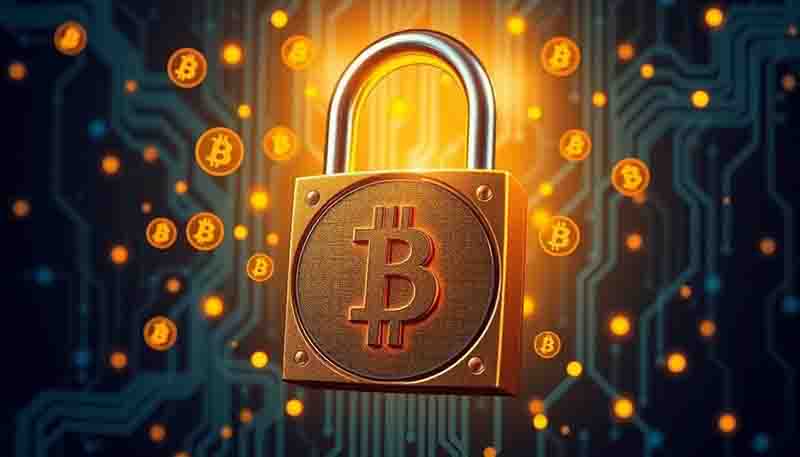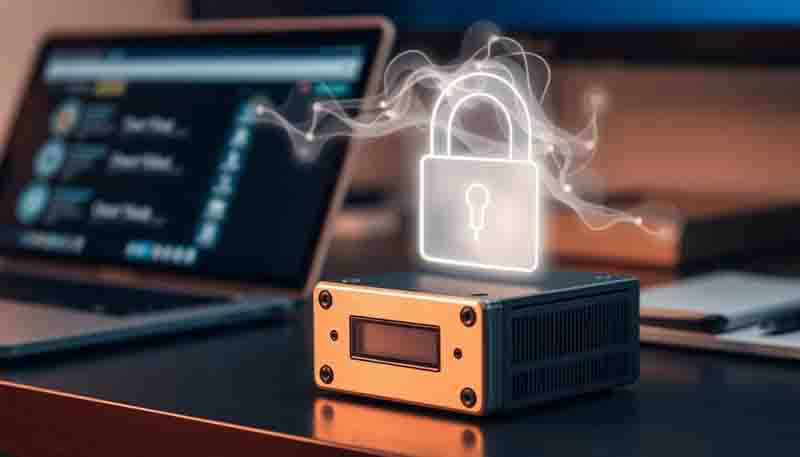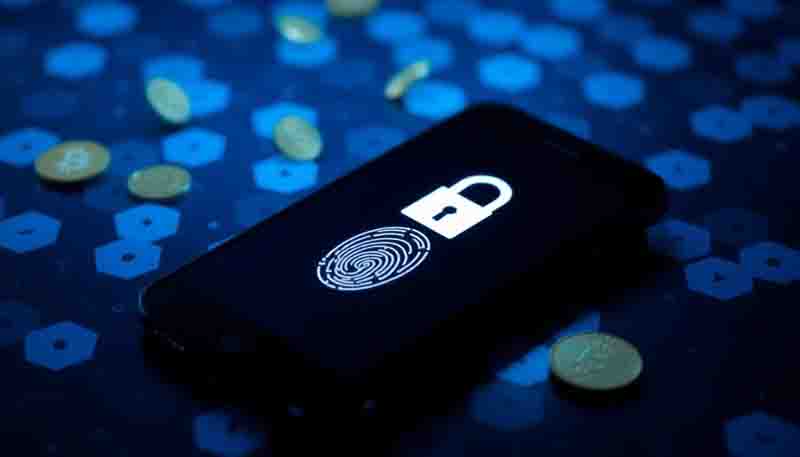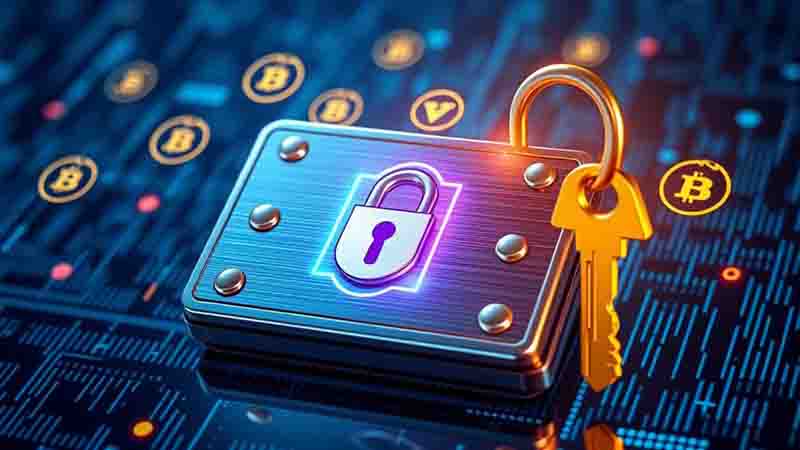Essential Crypto Wallet Protection: Safeguarding Your Investments
Note: This post may contain affiliate links, and we may earn a commission (with No additional cost for you) if you purchase via our link. See our disclosure for more info. The gold and crypto world is constantly changing. This is not financial, investment, legal, or professional advice. So, please verify the information on the gold and cryptocurrency provider’s websites.
Did you know that over $3.8 billion in cryptocurrency was stolen in 2022 alone? As the digital currency landscape continues to evolve, so do the tactics of cybercriminals seeking to exploit vulnerabilities in crypto wallets. You've worked hard to build your investment portfolio, and protecting it should be your top priority. From choosing reputable exchanges to implementing robust security measures, there's a lot you need to contemplate to keep your digital assets safe. Let's explore the essential steps you can take to fortify your crypto wallet and guarantee your investments remain secure in this ever-changing digital frontier.
Key Takeaways
- Enable Two-Factor Authentication (2FA) on all crypto accounts to add an extra layer of security against unauthorized access.
- Use strong, unique passwords for each account and update them regularly to enhance wallet security.
- Implement secure backup and recovery strategies, including encrypted offline backups stored in multiple locations.
- Employ hardware wallets for offline storage of private keys, reducing the risk of cyber threats.
- Stay vigilant against phishing attempts by verifying email addresses, URLs, and implementing anti-phishing best practices.
Choose Reputable Cryptocurrency Exchanges
When it comes to safeguarding your crypto assets, your first line of defense is choosing the right exchange. To protect your investments, it's vital to choose reputable cryptocurrency exchanges with strong security measures in place.
Prioritize platforms like Coinbase, Kraken, and Gemini, which are known for their compliance with financial regulations and robust security features.
Look for exchanges that implement Two-Factor Authentication (2FA) and use cold storage for the majority of user funds to minimize hacking risks. Research user reviews and ratings to assess the reliability and reputation of potential exchanges, avoiding those with a history of security breaches or fraud.
To further protect your assets:
- Diversify your holdings across multiple exchanges
- Verify if the exchange offers insurance coverage for stored assets
- Confirm the platform has a strong track record of security

Enable Two-Factor Authentication
One of the most effective ways to protect your crypto wallet is by enabling Two-Factor Authentication (2FA). This security measure adds an extra layer of protection to your cryptocurrency accounts, greatly reducing the risk of unauthorized access. By implementing 2FA, you're not just relying on a password but also requiring a second form of verification.
- Types of 2FA:
- SMS codes
- Authentication apps (e.g., Google Authenticator)
- Hardware tokens
Cybersecurity experts estimate that 2FA can decrease the likelihood of account breaches by up to 90%. This statistic underscores the significance of implementing this security feature to safeguard your digital assets in the high-risk environment of cryptocurrency trading.
To guarantee maximum protection for your investments:
- Enable 2FA on all your crypto accounts
- Choose a reliable authentication method
- Regularly update your 2FA settings
Many reputable exchanges and digital wallet providers now mandate 2FA, recognizing its essential role in protecting users' assets.
Use Strong Unique Passwords
While Two-Factor Authentication provides a robust layer of security, it's equally important to fortify your crypto wallet with strong, unique passwords.
Creating a strong password involves using at least 12 characters, combining uppercase and lowercase letters, numbers, and special symbols. This complexity greatly enhances your wallet's security against online threats and cyber attacks.
To manage these complex passwords effectively, consider using a password manager like LastPass. These tools can generate and securely store unique passwords for all your accounts, reducing the risk of using easily guessable combinations across multiple platforms.
Key practices for password security:
- Create passwords with 12+ characters, mixing letters, numbers, and symbols
- Use a password manager to generate and store complex passwords
- Update your passwords every 3-6 months
- Avoid reusing passwords across different accounts
Employ Hardware Wallets
A considerable step in safeguarding your cryptocurrency assets is employing hardware wallets.
These physical devices offer unparalleled crypto safety by storing your private keys offline, greatly reducing the risk of cyber threats compared to online storage methods.
Hardware wallets utilize advanced encryption protocols to protect your digital assets, ensuring that even if the device is lost or stolen, your investments remain secure.
Key benefits of hardware wallets:
- Offline storage: Keeps your private keys isolated from potentially compromised devices
- Multi-currency support: Manage various cryptocurrencies in one secure location
- Investment protection: Remarkably reduces the risk of hacking and unauthorized access
To maximize your hardware wallet's effectiveness:
- Store your device in a secure location when not in use
- Regularly install firmware updates to maintain peak security
- Back up your recovery seed phrase in a separate, safe place

Regular Software Updates
Beyond employing hardware wallets, you'll need to focus on maintaining your software's integrity. Regular software updates are essential for protecting your crypto wallet and investments. These updates often include security patches that safeguard against newly discovered vulnerabilities and threats, guaranteeing your assets remain secure.
Outdated wallet software can leave your investments exposed to significant risks. Hackers frequently exploit known weaknesses in older versions, which can be mitigated through timely updates. By keeping your software current, you're actively working to protect against vulnerabilities that could compromise your assets.
Key benefits of regular updates:
- Enhanced security measures
- Improved functionality and user experience
- Protection against the latest threats
To streamline this process, consider setting up automatic updates when available. This guarantees your wallet is always equipped with the latest security enhancements without requiring manual intervention.
Diversify Storage Methods
Diversifying your storage methods is an essential step in protecting your cryptocurrency assets. By using a combination of cold wallets and hot wallets, you can greatly enhance your security against potential threats.
Cold wallets, such as hardware and paper wallets, are kept offline and offer the highest level of protection for long-term holdings. Hot wallets, like mobile or web-based options, provide convenient access for everyday transactions.
To safeguard your cryptocurrency effectively, consider implementing the following strategies:
- Store 90% of your assets in cold wallets and 10% in hot wallets
- Use multiple wallets across different platforms to mitigate risks
- Regularly update and backup both hot and cold wallets
- Implement multi-signature wallets for added security
Beware of Phishing Attempts
Recognizing phishing scams is vital for protecting your crypto wallet, as these deceptive tactics have ensnared over 30% of individuals in the past year alone.
You'll need to be vigilant about verifying the authenticity of emails and messages, especially those claiming to be from financial institutions or cryptocurrency platforms.
Recognizing Phishing Scams
Phishing scams pose a notable threat to crypto wallet security, with over 1.5 million phishing sites detected in 2022 alone. Recognizing these scams is vital to protect your sensitive information and digital assets. Fraudulent emails and websites often impersonate legitimate entities, attempting to trick you into revealing personal details or login credentials.
To safeguard your crypto wallet, it's important to verify email addresses and URLs before entering any information or clicking on links.
Common phishing tactics include:
- Urgent messages claiming account issues
- Poor grammar or spelling errors in communications
- Unsolicited requests for personal information
- Suspicious attachments or links
Be cautious of these red flags and always double-check the authenticity of any communication requesting sensitive data. Legitimate companies typically don't ask for personal information via email or direct messages.
To enhance your protection, utilize anti-phishing software and browser extensions that help detect and block fraudulent websites and emails. By staying vigilant and implementing these precautions, you'll greatly reduce the risk of falling victim to phishing scams and better protect your crypto investments.

Anti-Phishing Best Practices
To protect your crypto wallet from phishing attempts, you'll need to implement robust anti-phishing practices.
Safeguarding your digital assets requires constant vigilance and a proactive approach to security.
Key Anti-Phishing Best Practices:
- Always verify the authenticity of communications from financial institutions. Engage only with official channels to guarantee the safety of your digital assets.
- Before entering sensitive information on websites, confirm that URLs are secure (beginning with HTTPS) and look for signs of legitimacy.
- Be wary of unsolicited emails or messages requesting personal information or prompting you to click on links. These are common tactics used in phishing scams targeting cryptocurrency investments.
- Utilize email filters and anti-phishing software to detect and block potential threats from reaching your inbox.
- Stay informed about the latest phishing techniques in the cryptocurrency space. Regular education will help you remain vigilant against evolving threats.
Implement Backup and Recovery Strategies
To protect your cryptocurrency assets, you'll need to implement robust backup and recovery strategies.
Start by creating secure offline backups of your wallet data, encrypting them to prevent unauthorized access.
Store multiple copies of these backups in different physical locations to guarantee data redundancy and safeguard against potential loss or corruption.
Secure Offline Backups
A fortress is only as strong as its weakest point, and the same applies to your crypto wallet's security.
Secure offline backups are vital to protect your digital assets from online threats and potential hacks. Implementing cold storage methods, such as hardware wallets or paper wallets, creates an additional layer of protection by keeping your sensitive information offline.
To establish a robust backup strategy, consider these essential steps:
- Create encrypted backups of your wallet data
- Store wallet seed phrases and private keys securely
- Maintain data redundancy across multiple physical locations
- Regularly update your backups to reflect changes in wallet contents
Multi-Location Data Redundancy
While securing your crypto wallet is essential, implementing a multi-location data redundancy strategy is equally important for protecting your digital assets. This approach involves creating multiple backups of your wallet data and storing them in various secure locations. By doing so, you'll minimize the risk of losing access to your funds due to hardware failure, theft, or other unforeseen circumstances.
To implement an effective multi-location data redundancy strategy:
- Create encrypted backups of your wallet data
- Store copies in both cloud storage and physical media (e.g., external hard drives, USB devices)
- Keep offline backups to minimize exposure to online threats
- Maintain multiple copies of critical information, such as private keys and seed phrases
- Distribute backups across different secure locations
Regularly review and update your backup strategy to confirm it remains effective.
Perform periodic checks on the integrity and accessibility of your backups to assure quick recovery in case of emergencies. By implementing these measures, you'll notably enhance the security of your crypto investments and protect against potential loss or theft.
Frequently Asked Questions
How Do I Securely Store My Wallet's Recovery Phrase or Seed Words?
To securely store your wallet's recovery phrase or seed words, you should prioritize recovery phrase security.
Consider using encrypted backups or password managers for digital storage. For physical safekeeping, opt for paper wallets stored in physical safes or secure locations.
Digital vaults offer another layer of protection for your mnemonic phrases. If sharing is necessary, use secure sharing methods or multi-signature wallets.
What Are Cold Storage Options for Long-Term Cryptocurrency Holdings?
Did you know that over 20% of all Bitcoin is estimated to be lost or inaccessible?
For long-term cryptocurrency holdings, you've got several cold storage options:
- Hardware wallets: Secure offline devices
- Paper wallets: Printed private keys
- USB drives: Encrypted storage
- Multi-signature accounts: Require multiple approvals
- Brain wallets: Memorized passphrases
- Metal backups: Durable seed phrase storage
- Air-gapped computers: Offline systems
- Cold storage services: Third-party secure storage
Each option offers unique benefits for physical security and wallet diversification.
Choose based on your needs and risk tolerance.
Can I Insure My Cryptocurrency Wallet Against Theft or Loss?
You can insure your cryptocurrency wallet against theft or loss, but options are limited. Some specialized crypto insurance providers offer coverage for digital assets.
Before purchasing, conduct a security audit and implement theft prevention strategies. Consider using multi-signature wallets and hardware wallets for enhanced protection.
Be aware of policy limitations and conduct a thorough risk assessment. Proper recovery phrase storage is vital for wallet recovery.
While insurance provides some peace of mind, it's important to prioritize robust security measures to safeguard your digital assets.
How Often Should I Transfer Funds Between Hot and Cold Wallets?
How often should you move your crypto funds? The frequency of transfers between hot and cold wallets depends on your risk assessment and fund allocation strategy.
For ideal hot wallet security, keep only small amounts for daily transactions. Leverage cold wallet advantages by storing larger holdings offline.
Consider these wallet management tips:
- Implement regular wallet backup strategies
- Use wallet diversification methods to spread risk
- Employ robust wallet access controls
- Maintain diligent crypto transaction tracking
Adjust your transfer frequency based on your trading activity and security needs.
Are There Tax Implications for Moving Crypto Between Different Wallets?
You should be aware of potential tax implications when moving crypto between wallets.
While transfers themselves aren't typically taxable events, they can complicate tax reporting. Keep detailed transaction histories, as exchanges may report to tax authorities.
Capital gains may apply if you sell or trade crypto. Jurisdictions differ in regulations, so consult a tax professional.
Proper financial planning can help minimize audit risks and maximize potential tax deductions. Always stay informed about your local tax laws regarding cryptocurrency transactions.
Conclusion
Protecting your crypto wallet isn't just a choice; it's a necessity. You've learned essential strategies: choosing reputable exchanges, enabling 2FA, using strong passwords, employing hardware wallets, updating software, diversifying storage, avoiding phishing, and implementing backups. By applying these practices consistently, you'll greatly enhance your wallet's security. Remember, in the world of cryptocurrency, vigilance is your best defense. Stay informed, stay cautious, and keep your digital assets safe from potential threats.













